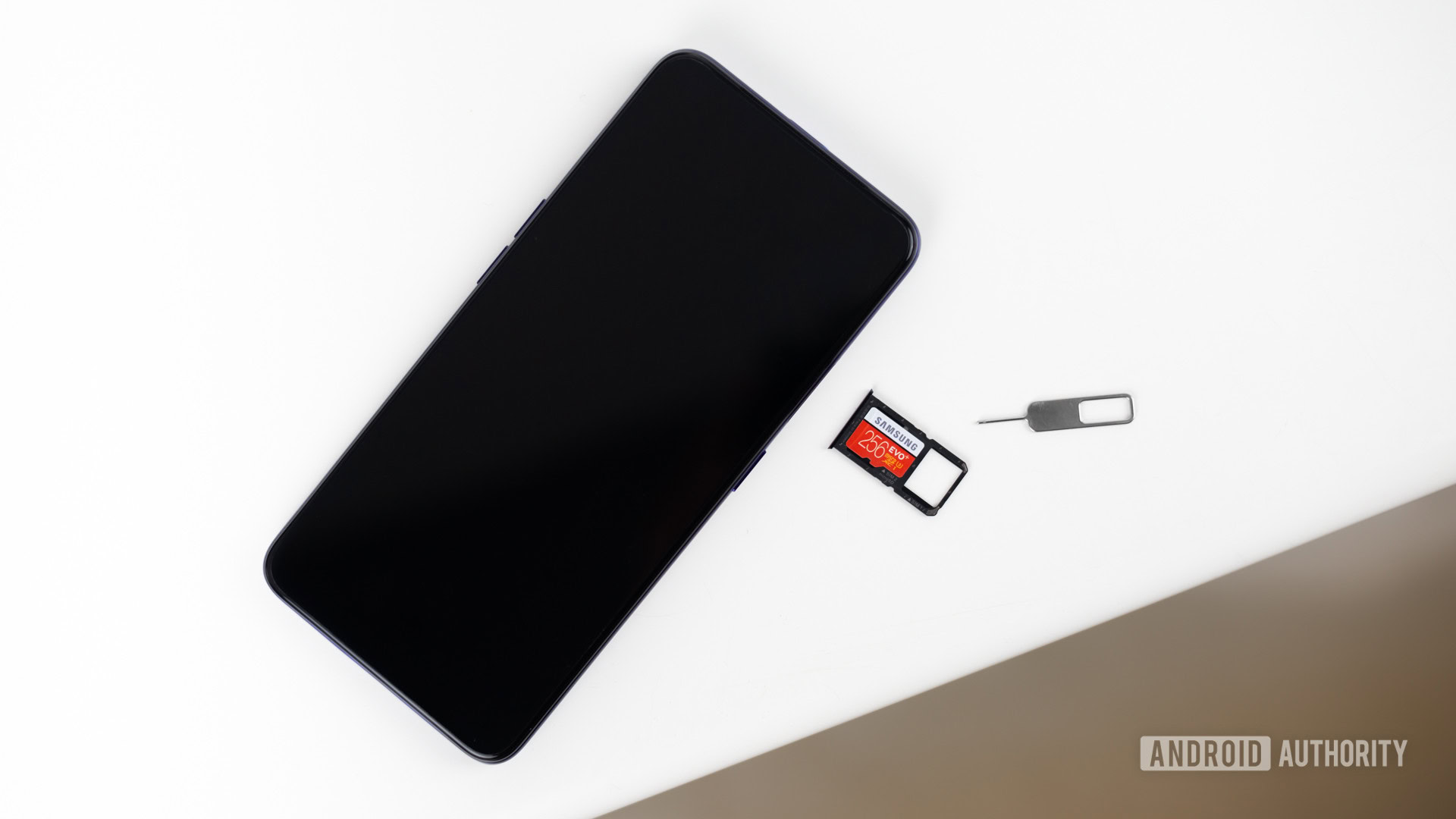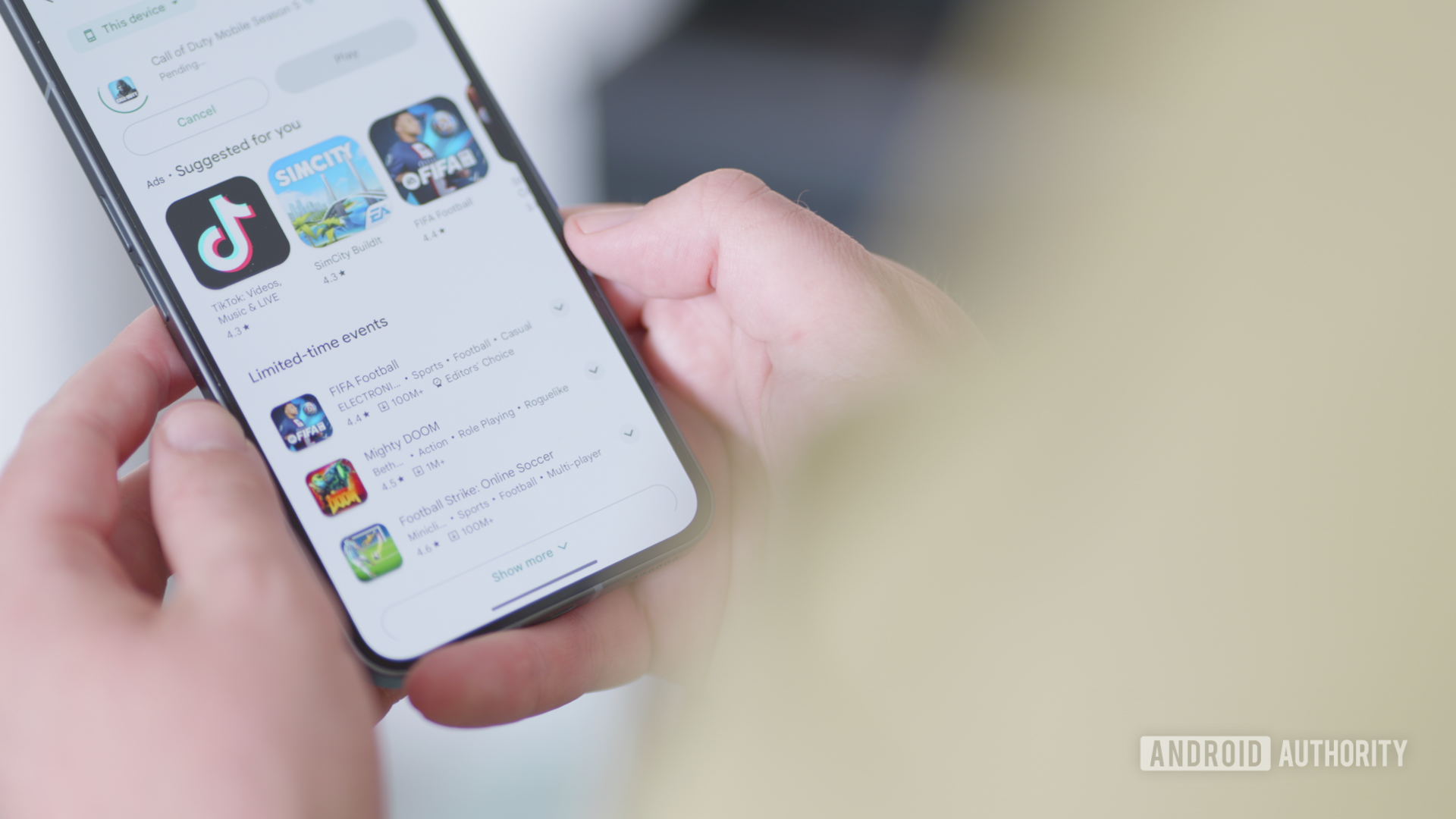Affiliate links on Android Authority may earn us a commission. Learn more.
How to move apps to an SD card on Android
Published onMay 9, 2024
Are you running out of memory? In this guide, you’ll learn how to move apps to your SD card so you can free up storage and get the most from your internal storage space.
Managing storage space has become easier with the help of cloud services, streaming, and smartphones getting more internal memory. Regardless, it’s often a matter of time before you find yourself looking around for apps to delete so you can make space for more files and apps. Many of you may own budget devices, which usually make sacrifices in the storage department. You might also enjoy games, and these apps are known to use up a significant amount of storage.
The good news is that if your device comes with expandable storage, you’ll be able to move apps to an SD card. Additionally, you can turn your microSD card into internal storage. This will effectively make it possible to move apps to your SD card and all other data you may have on your phone. We’ll show you how to do both.
QUICK ANSWER
You can move apps to SD by going to Settings > Apps and selecting the app you want to move. Then, go into the Storage section. Go into Storage used, tap Change, select the SD card, and then hit Move.
JUMP TO KEY SECTIONS
Things to know before moving forward

There are some things to keep in mind before moving forward. While the ability to move apps to an SD card used to be pretty widespread, it’s become less common in later years. For starters, the list of devices that even support SD cards is getting shorter. Most of them are mid-range or budget phones. And even if your device has an SD card slot, it might not support moving apps to an SD card. Furthermore, app developers have to enable this feature. Very few do nowadays.
We should also mention that some phones can turn your external storage into internal storage. This also has its downsides. The main ones are that the phone will require using the SD card at all times, and it can’t be transferred to another phone unless formatted. We’ll talk more about this method and its consequences in the latter section of this guide.
How to move apps to an SD card on Android
The good news is that moving apps to an Android SD card is effortless. Just keep in mind some apps don’t allow this feature. Manufacturers might also remove this capability.
Move Android apps to SD card:
- Open the Settings app.
- Go into Apps.
- Access the app you want to move to the SD card.
- Select Storage.
- If the app supports the feature, you will see an option called Storage used. To change where the app is stored, tap the Change button right under.
- Select the SD card.
- Tap on Move.
- The phone will transfer the files.
This process is reversible, so if you decide you want the app back on your internal storage, you can move it again using the same process.
Note: These instructions were put together using a Samsung Galaxy S10 Plus running Android 12. Some steps will differ depending on your hardware and software.
Use an SD card as internal storage
If the previous method isn’t good enough or isn’t supported by your app/manufacturer, there’s still another way to move apps to microSD on Android. You can make Android treat your SD card as internal storage. This will make everything much more convenient, as you would no longer have to worry about where to put apps and files. Your internal storage and SD card will turn into one conglomerate.
Turning your microSD card into internal storage has its downsides. Once you turn an SD card into a phone’s internal storage, you can only use that storage unit with that specific phone (unless you format it again). Furthermore, the phone will only work when said microSD card is inserted. Removing it will trigger a factory data reset.
Aside from turning your phone and SD card into slaves to each other, you might also have to worry about performance. SD cards can be slow. Ensure you get one fast enough to keep performance healthy on your Android device. We have a list of the best microSD cards, if you need some help finding a good one. Lastly, not every phone supports this feature, even if it has expandable storage.
Adopt an SD card the easy way:
- Insert the microSD card into the phone.
- If the device supports it, a notification will ask you how you want to use it.
- Choose to adopt external storage. This will format and encrypt the microSD card.
How to adopt an SD card from the settings:
- Put the microSD card in your Android phone.
- Open the Settings app.
- Select Storage.
- Tap on the SD card you inserted.
- Hit the three-dot menu button and select Storage settings.
- Choose Format.
- Hit Format another way.
- Select Format.
Using a third-party app

If you’re having no luck with the native ways to move apps to SD cards, you might want to try one more thing — using a third-party app. There are plenty of them on the Google Play store. A very popular one is AppMgr III, previously known as App 2 SD.
Just remember these won’t work with all apps either. These apps are great options for when phones have stopped supporting the feature, and your apps still do.
FAQs
No. The developer has to support this feature. Additionally, the phone has to support this capability and have an SD card slot, which is rare nowadays.
Removing an SD card that has been adopted as internal storage will trigger a factory reset. This is because the system has integrated it with the actual internal storage and considers them one. The SD card needs to stay in your phone until formatted again.
Technically, you should be able to, but keep in mind that a slower SD card will also slow down your apps. It would be best to consider going for at least a Class 10 UHS-1 SD card. Or one as fast as your phone supports.
It is now a very rare feature. Even older phones that have been upgraded to more recent Android versions have begun to lose these capabilities.